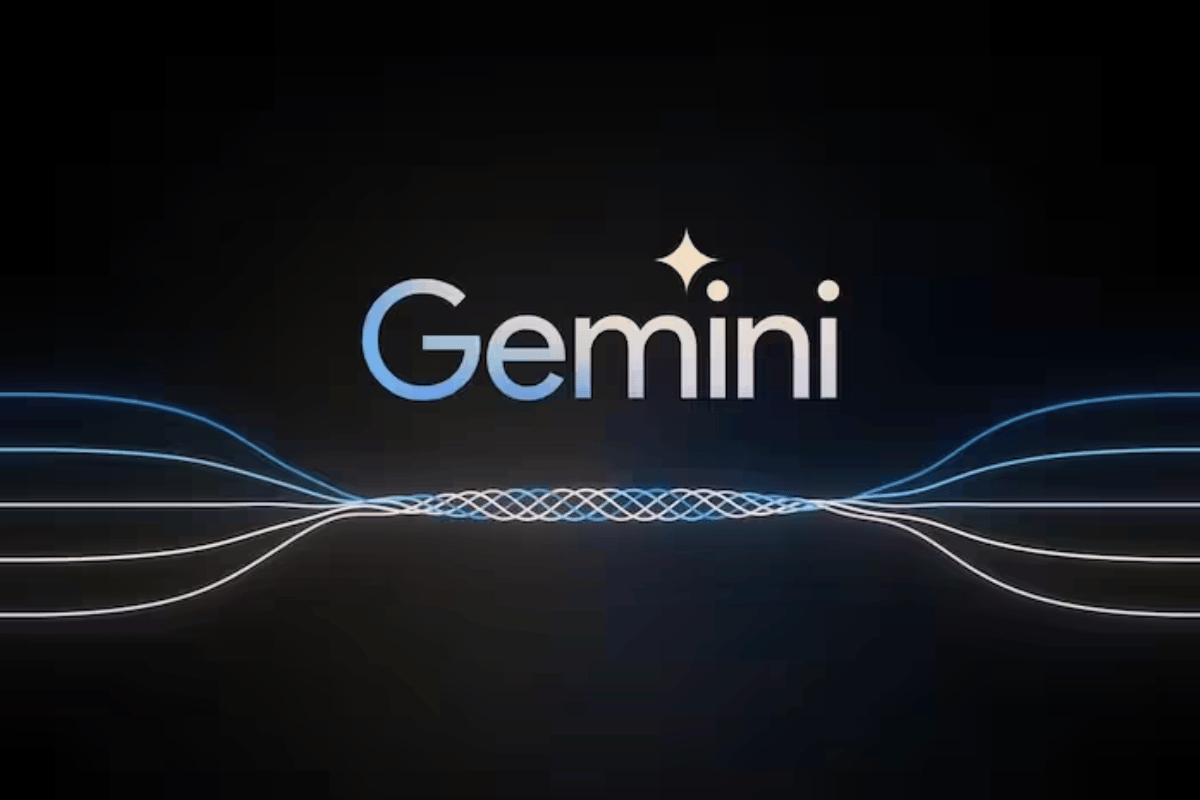Imagine a world where you can talk to your phone, laptop, or smart speaker as if they were your friends. Where you can ask them anything, from the weather to the meaning of life, and get a natural and intelligent response. Where you can create stunning artwork, write captivating stories, or code amazing apps with just a few words. Where you can explore any place on Earth, or even beyond, with a realistic and immersive view. Sounds like science fiction, right? Well, not anymore.
Thanks to Google Gemini, this world is closer than you think. In this article, we will explain what Google Gemini is, how it works, and why it matters. We will also show you some of the amazing things that Gemini can do, and how you can use it to make your life easier, more productive, and more fun. This guide is suitable for developers, marketers, students, and anyone with a curious mind. It offers interesting and valuable information. Let’s begin exploring the world of Google Gemini.
What is Google Gemini?
Google Gemini is Google’s flagship AI model, and it is unlike anything you have ever seen before. It is not just a language model, like GPT-4 or BERT. It is a multimodal model, which means it can understand and generate not only text, but also images, audio, video, code, and more. It is also a generative model, which means it can create new and original content, rather than just copying or summarizing existing ones.
And it is a conversational model, which means it can engage in human-like dialogues, with context, emotion, and personality. Google Gemini is the result of years of research and development by Google’s Brain Team and DeepMind, two of the world’s leading AI labs. It builds upon the success of PaLM 2, the core technology that powers many of Google’s products and services, such as Gmail, Google Workspace, Google Maps, and Bard. But Gemini goes beyond PaLM 2 in every aspect, from the size and complexity of the model to the quality and diversity of the output, to the range and impact of the applications.
How Google Gemini Works: The Architecture and the Algorithms
Google Gemini is a collection of models designed for various purposes and sizes, rather than a single model. There are three different versions of Gemini available: Ultra, Pro, and Nano. Each variant has a different number of parameters, layers, and heads, which affect the model’s performance and capabilities.
The Three Variants of Gemini
- Ultra: This is the biggest and most powerful variant of Gemini. It has 1.5 trillion parts, and it is used for research, innovation, and experimentation.
- Pro: This is the medium-sized variant of Gemini. It has 500 billion parts, and it is used for Google products and services, such as Bard, Duet AI, and Generative Search.
- Nano: This is the smallest and most accessible variant of Gemini. It has 100 billion parts, and it is used by developers and users, who can access Gemini through APIs and apps.
The Transformer Model
The Transformer model is composed of two primary parts: the encoder and the decoder. The encoder converts the input into a series of embeddings, which are numerical representations of the input. The decoder uses these embeddings to produce the desired output, such as text, images, audio, etc. Both the encoder and the decoder are composed of multiple layers, each of which performs a series of operations on the embeddings, such as self-attention, cross-attention, feed-forward, and normalization.
Each layer also has multiple heads, which are parallel sub-layers that perform the same operation on different parts of the embeddings. This allows the model to capture different aspects and perspectives of the input and output. The Transformer model is very powerful and flexible, as it can handle different types of input and output, and learn from different sources of data.
However, it also has some limitations, such as the difficulty of dealing with multimodal data, which are data that combine different types of input and output, such as text and image, or audio and video. Multimodal data are very common and useful in real-world scenarios, such as searching for information, creating content, or interacting with devices. Therefore, Google Gemini extends the Transformer model with some novel features and techniques, which make it a truly multimodal AI.
The Multimodal Features and Techniques of Gemini
Multimodal Embeddings
Gemini uses a unified embedding space for all types of input and output, such as text, image, audio, video, code, etc. This means that Gemini can represent and compare different types of data in the same way, and learn the similarities and differences between them. This also allows Gemini to perform zero-shot learning and generation, which means that Gemini can learn and generate new types of data that it has never seen before, such as a new language, a new image style, or a new code syntax.
Multimodal Attention
Gemini uses a modified attention mechanism that can handle multimodal data, such as text and image, or audio and video. This means that Gemini can learn the relationships and interactions between different types of data, and generate coherent and consistent output. For example, Gemini can generate a caption for an image, or a soundtrack for a video, that matches the content and the context of the input.
Multimodal Pre-training
Gemini uses a large and diverse corpus of multimodal data to pre-train its model, such as web pages, books, images, videos, podcasts, etc. This means that Gemini can learn from a rich and varied source of knowledge and information, and acquire a general and comprehensive understanding of the world. This also allows Gemini to perform few-shot learning and generation, which means that Gemini can learn and generate new tasks and domains with only a few examples, such as a new topic, a new genre, or a new format.
Multimodal Fine-tuning
Gemini uses a flexible and scalable framework to fine-tune its model for specific applications and use cases, such as Bard, Duet AI, or Generative Search. This means that Gemini can adapt and optimize its model for different purposes and scenarios, and provide customized and personalized output. For example, Gemini can fine-tune its model to generate different types of content, such as poems, stories, code, essays, songs, etc., or to interact with different types of users, such as developers, marketers, students, or just curious people.
Applications and Use Cases of Google Gemini
Google Gemini is a powerful artificial intelligence (AI) system that can handle various types of information, such as text, images, audio, and video. It can also generate new content, such as emails, stories, code, and more. It has many applications and use cases across different domains and industries. Some of them are:
Search
Google Gemini can improve the quality and relevance of search results by understanding the user’s intent and context. It can also provide more interactive and immersive ways to explore information, such as Immersive Views for routes in Maps.
Communication
Google Gemini can help users write better and faster with features like “Help me write” in Gmail, which can create full drafts of emails based on a simple prompt. It can also enable more natural and engaging conversations with chatbots, such as Bard1, Google’s AI poet.
Education
Google Gemini can assist students and teachers with learning and teaching, by providing personalized feedback, suggestions, and explanations. It can also create educational content, such as quizzes, summaries, and essays, based on the user’s needs and preferences.
Entertainment
Google Gemini can entertain users with creative and diverse content, such as stories, poems, songs, jokes, and more. It can also generate realistic and interactive simulations of virtual worlds, characters, and scenarios, using multimodal inputs and outputs.
Development
Google Gemini can help developers create and improve software applications, by generating and optimizing code, debugging errors, and testing functionality. It can also enable developers to build new AI applications and APIs, using Gemini’s capabilities and models. These are just some of the examples of how Google Gemini can be used to make AI more helpful for everyone. As Google continues to develop and improve Gemini, we can expect to see more innovative and exciting use cases in the future.
Google Gemini: Release Date
Google has launched Gemini Pro, the version of Gemini that can handle a wide range of tasks. According to these reports, Google has given early access to Gemini Pro to some developers and companies and integrated it into some of its products and services, such as Google Cloud Vertex AI3 and NotebookLM4. However, Google has not officially announced the launch of Gemini Pro yet, and it may be still in beta testing or limited availability. Therefore, we would say that Gemini Pro has not been fully launched to the public, but it may be coming soon.
Bottom Line
Google Gemini is a powerful new AI model that can understand and generate not only text, but also images, audio, video, code, and more. It is still under development, but it has the potential to be used in a wide range of applications, including search, communication, education, entertainment, and development. Google Gemini is the future of AI, and you can be part of it.












